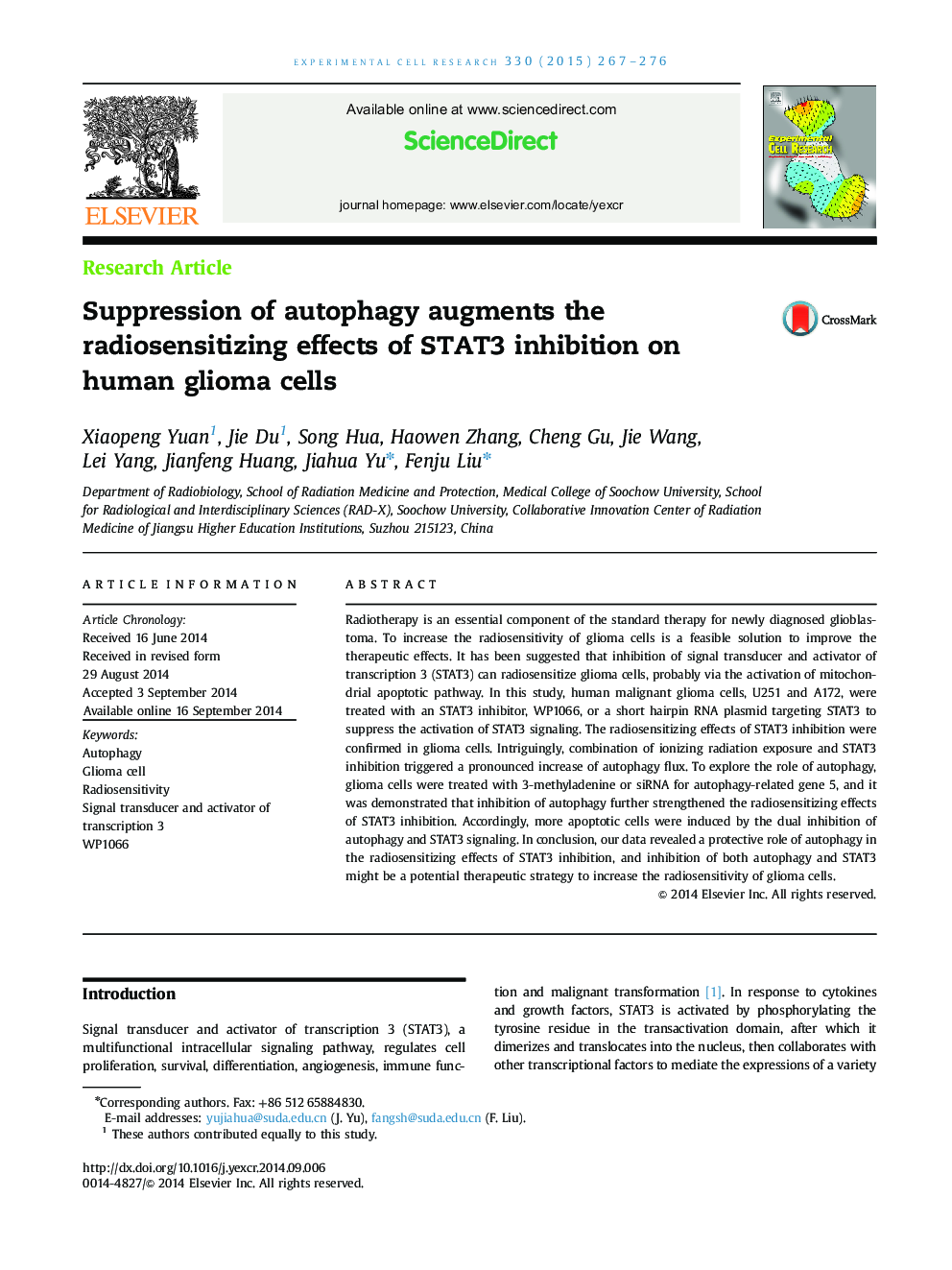| Article ID | Journal | Published Year | Pages | File Type |
|---|---|---|---|---|
| 8452420 | Experimental Cell Research | 2015 | 10 Pages |
Abstract
Radiotherapy is an essential component of the standard therapy for newly diagnosed glioblastoma. To increase the radiosensitivity of glioma cells is a feasible solution to improve the therapeutic effects. It has been suggested that inhibition of signal transducer and activator of transcription 3 (STAT3) can radiosensitize glioma cells, probably via the activation of mitochondrial apoptotic pathway. In this study, human malignant glioma cells, U251 and A172, were treated with an STAT3 inhibitor, WP1066, or a short hairpin RNA plasmid targeting STAT3 to suppress the activation of STAT3 signaling. The radiosensitizing effects of STAT3 inhibition were confirmed in glioma cells. Intriguingly, combination of ionizing radiation exposure and STAT3 inhibition triggered a pronounced increase of autophagy flux. To explore the role of autophagy, glioma cells were treated with 3-methyladenine or siRNA for autophagy-related gene 5, and it was demonstrated that inhibition of autophagy further strengthened the radiosensitizing effects of STAT3 inhibition. Accordingly, more apoptotic cells were induced by the dual inhibition of autophagy and STAT3 signaling. In conclusion, our data revealed a protective role of autophagy in the radiosensitizing effects of STAT3 inhibition, and inhibition of both autophagy and STAT3 might be a potential therapeutic strategy to increase the radiosensitivity of glioma cells.
Related Topics
Life Sciences
Biochemistry, Genetics and Molecular Biology
Cancer Research
Authors
Xiaopeng Yuan, Jie Du, Song Hua, Haowen Zhang, Cheng Gu, Jie Wang, Lei Yang, Jianfeng Huang, Jiahua Yu, Fenju Liu,
